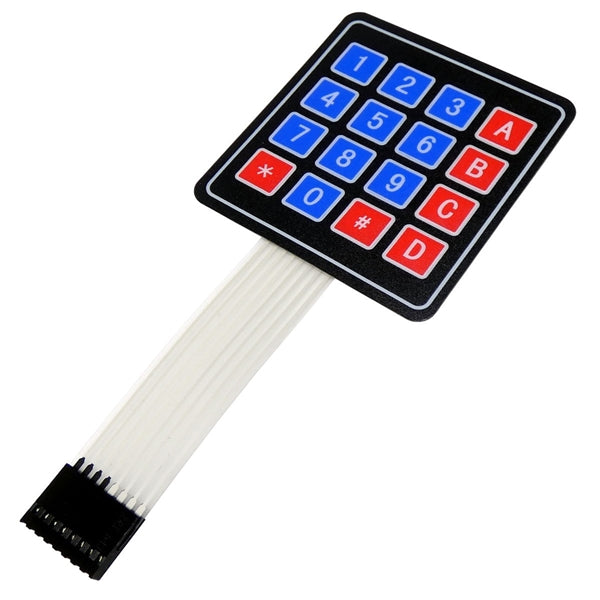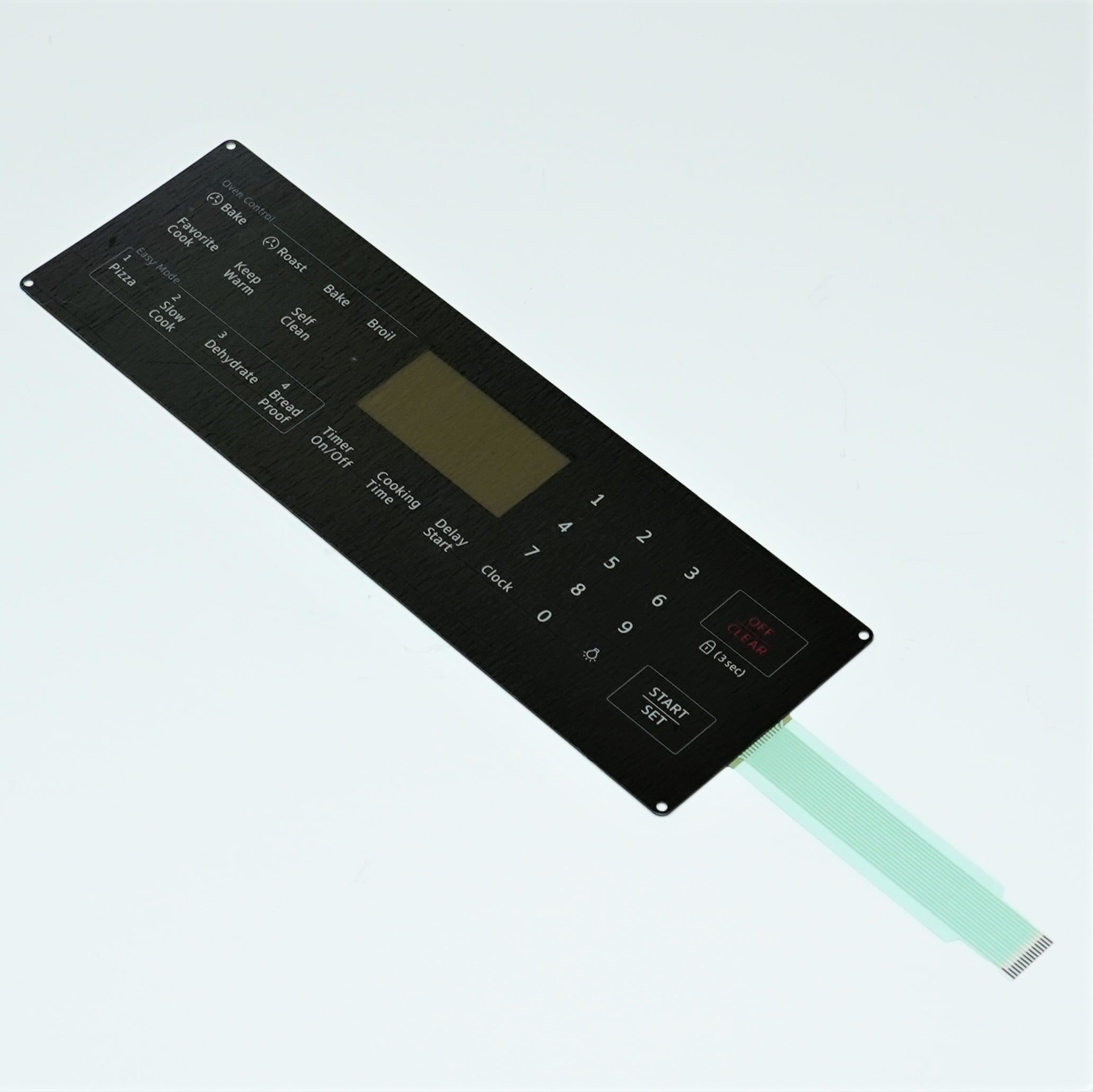Membrane Switch: A Comprehensive Guide to Its Uses and Applications
Membrane Switch: A Comprehensive Guide to Its Uses and Applications
Blog Article
Comprehending Membrane Layer Switches: The Secret to Durable and Trustworthy Controls

What Are Membrane Layer Buttons?
Membrane layer switches are a sophisticated service in the realm of interface modern technology, combining functionality and design perfectly. These gadgets work as a user interface in between users and digital systems, integrating several components into a small layout. Typically constructed from flexible, slim layers of materials, membrane switches are designed to reply to touch, enabling users to interact with machinery and electronic tools effectively.
The key components of a membrane layer button consist of a printed circuit layer, graphic overlay, and a spacer layer that avoids unintentional activation. The graphic overlay can be customized to mirror brand name identity or individual preferences, enhancing visual appeals while guaranteeing usability. Membrane layer buttons are frequently used in various applications, consisting of clinical gadgets, consumer electronic devices, and commercial equipment, owing to their resilience and resistance to environmental variables such as wetness and dust.
Among the crucial advantages of membrane layer buttons is their capability to withstand damage, making them suitable for high-traffic atmospheres. Additionally, they are lightweight and call for minimal area, permitting cutting-edge styles in item growth. Generally, membrane layer switches stand for a reliable and useful selection for contemporary electronic interfaces, weding innovation with user-centric design principles.
Just How Membrane Switches Over Work
The procedure of membrane layer switches hinges on a basic yet effective mechanism that equates customer input right into electronic signals. When a user presses the switch, the leading layer flaws, allowing a conductive element in the circuit layer to make contact with a matching conductive pad on the bottom of the visuals overlay.
The layout of membrane switches can vary, but they commonly include domes or responsive elements to offer comments to the individual, improving the total experience - membrane switch. The products made use of in membrane layer buttons, such as polyester or polycarbonate, add to their resilience and resistance to environmental aspects, consisting of wetness and dust. The printed circuits are generally enveloped, which protects them from wear and tear over time.
Advantages of Membrane Switches

Furthermore, membrane layer buttons are recognized for their resilience. Built from durable products, they are immune to dirt, wetness, and physical wear, which significantly extends their life expectancy compared to standard mechanical buttons. This resilience makes them particularly suitable for high-traffic atmospheres and applications needing durability.
One more considerable benefit is the ease of cleaning and maintenance. The smooth surface area of membrane layer switches over decreases dirt build-up and is commonly resistant to spills, making them excellent for setups that need regular sanitization.
Additionally, membrane switches supply a structured account, causing a thinner style that can be integrated right into numerous gadgets without adding bulk. This attribute not just enhances the aesthetic allure however likewise contributes to an extra ergonomic item design.
Applications of Membrane Layer Buttons
Straightforward and functional, membrane buttons locate applications across a large range of markets, including clinical devices, customer electronic devices, and commercial devices. In the clinical field, these buttons are important to gadgets such as analysis devices, client surveillance systems, and infusion pumps, where reliability and convenience of cleaning are essential. Their capability to endure rough atmospheres and maintain performance makes them perfect for such applications.

In consumer electronic devices, membrane layer switches are made use of in products like microwaves, cleaning equipments, and push-button controls - membrane switch. Their streamlined design enables for instinctive interface, boosting the overall user experience while supplying resilience and resistance to tear and put on
Industrial devices additionally gains from membrane switches, especially in control panels for equipment and automation systems. These buttons provide security versus dirt and dampness, guaranteeing constant efficiency in tough settings. Their customizable features allow producers to tailor them to particular operational requirements, improving effectiveness and performance.
Selecting the Right Membrane Layer Switch Over
When picking a membrane layer button, it is necessary to consider news numerous variables that anonymous affect efficiency and viability for certain applications. The main considerations include environmental problems, responsive comments, toughness, and style specs.
First, evaluate the operating environment; switches revealed to wetness, chemicals, or severe temperatures require details products to guarantee durability and functionality. Next off, examine the requirement for tactile feedback. Depending on customer communication, some applications may profit from a responsive feedback to verify activation, while others may favor a non-tactile style for aesthetic factors.
Longevity is one more vital factor; membrane layer switches need to be created to endure frequent usage, impacts, and abrasion. Make certain the chosen button can withstand the expected lifecycle, especially in high-usage scenarios.

Final Thought
To conclude, membrane layer changes serve as essential parts in the style of resilient and dependable control systems across various sectors. Their small layout, integrated with robust building and construction and adjustable features, boosts user communication while guaranteeing longevity sought after environments. The adaptability of membrane switches over allows for customized solutions that satisfy specific functional demands, strengthening their value in contemporary innovation. As industries proceed to evolve, the value of integrating efficient membrane layer switch options can not be overemphasized.
Membrane switches represent an important facet of modern interface style, mixing capability with strength in various applications.Membrane switches are an advanced remedy in the world of customer interface technology, combining functionality and style effortlessly. Commonly constructed from flexible, thin layers of materials, membrane layer buttons are designed to respond to touch, making it possible for individuals to interact with machinery and digital devices effectively.
The design of membrane layer buttons can differ, however they commonly include domes or responsive aspects navigate to this site to offer comments to the user, enhancing the total experience.In verdict, membrane layer switches over offer as necessary elements in the style of resilient and reputable control systems across various sectors.
Report this page